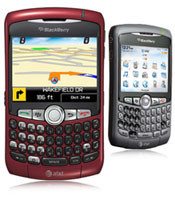| Рубрикатор |  |
 |
| Все новости |  |
World News |  |
 |
GPS Edges Out Internet as Desired Cellphone Capability in National Survey
| 25 декабря 2007 |
Underscoring soaring consumer interest in navigation services based on the Global Positioning System (GPS), a new national survey by Leo J. Shapiro and Associates (LJS) found that cellphone users cite GPS capability more frequently than Internet access as a desired feature.
Based on data from phone interviews conducted in early December with a national sample of 450 Americans, the survey found that among current cellphone owners 24% would want their next cell phone to have GPS capabilities, while 19% would want Internet access. The survey also found that the vast majority of GPS device owners do not have GPS-enabled cell phones. Among current GPS owners 51% report having a portable GPS device, 39% have a car-based device, and only 6% have a GPS-enabled cell phone.The GPS is a U.S. satellite-based system that provides reliable positioning, navigation and timing services. Analogous to a global "Where's Waldo?" game, a GPS-enabled device can pinpoint your location. GPS navigation devices overlay your location with maps from a geographic information system (GIS) to create an interactive, instantaneous, personal guide. These responses suggest consumer interest in GPS-enabled cellphones will continue to rise as their utility moves beyond location-tracking to navigation and concierge services found in the latest dashboard and hand-held versions. These new findings build on previous research conducted by LJS in early October, which revealed that today's GIS-based mapping tools have achieved striking penetration into the everyday lives of Americans. A majority (60%) report recent use of a geographic website (e.g. Map Quest, Google Maps), with nearly everyone (94%) reporting they have heard of GPS. New GPS-enabled personal navigation devices are leapfrogging past early-adopter growth and surging almost directly into mainstream usage, with nearly one-third (32%) reporting having used a GPS-enabled device. "GPS is displaying a rapid and unusual pattern of diffusion," adds Owen SHAPIRO, Vice President of LJS. "Our research is finding the purchase and use of GPS-enabled devices is not confined to segments of the population in which 'early adopters' are generally concentrated - the young, highly educated or affluent. Today's GPS-enabled devices are being widely adopted, including among the middle-aged and elderly. As this breakout unfolds, we expect intensifying marketplace competition among the incumbent and newcomer brands as they race for dominance in this explosively growing market."
These responses suggest consumer interest in GPS-enabled cellphones will continue to rise as their utility moves beyond location-tracking to navigation and concierge services found in the latest dashboard and hand-held versions. These new findings build on previous research conducted by LJS in early October, which revealed that today's GIS-based mapping tools have achieved striking penetration into the everyday lives of Americans. A majority (60%) report recent use of a geographic website (e.g. Map Quest, Google Maps), with nearly everyone (94%) reporting they have heard of GPS. New GPS-enabled personal navigation devices are leapfrogging past early-adopter growth and surging almost directly into mainstream usage, with nearly one-third (32%) reporting having used a GPS-enabled device. "GPS is displaying a rapid and unusual pattern of diffusion," adds Owen SHAPIRO, Vice President of LJS. "Our research is finding the purchase and use of GPS-enabled devices is not confined to segments of the population in which 'early adopters' are generally concentrated - the young, highly educated or affluent. Today's GPS-enabled devices are being widely adopted, including among the middle-aged and elderly. As this breakout unfolds, we expect intensifying marketplace competition among the incumbent and newcomer brands as they race for dominance in this explosively growing market."
Источник: Leo J. Shapiro and Associates
Читайте также:
Разработаны импортозамещающие антенны для GPS и ГЛОНАСС
Ростех и «Глонасс» обеспечат безопасность полетов сельхозавиации в условиях «закрытого неба»
Перебои с сигналом GPS не повлияют на безопасность полетов в России
ГЛОНАСС перестанет использовать "советское" время
В России ежечасно будут определять координаты пользователей мобильной спутниковой связи
















Оставить свой комментарий:
Комментарии по материалу
Данный материал еще не комментировался.